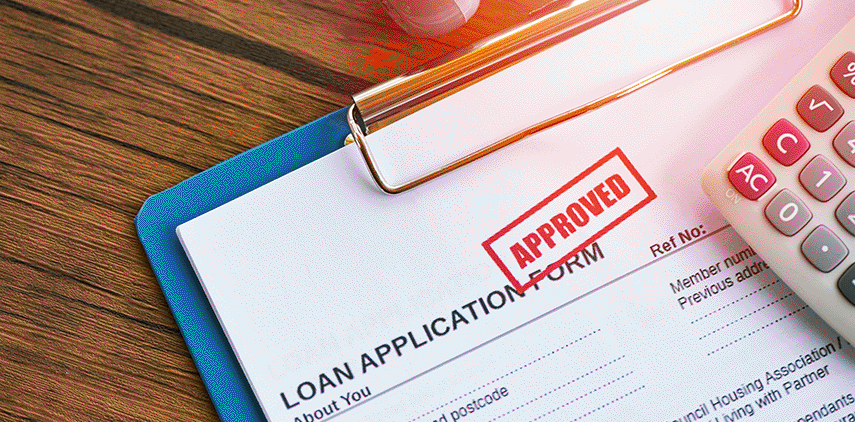Loans have become integral to our lives as we strive to achieve our financial goals. Whether buying a home, starting a business, or paying for education, loans offer us the financial assistance we need.
However, the interest rate is one critical factor that borrowers must consider when taking out a loan. The interest rate is the additional amount borrowers must pay back to the lender on top of the principal amount borrowed.
In this context, borrowers always seek loans with the best interest rates. This article will explore the types of loans that provide the best interest rates and how to obtain them.
What Source of Credit Has the Lowest Interest Rate?
Several different types of credit sources can offer low-interest rates. Each option has its pros and cons, so it’s essential to compare the different types of loans before deciding.
Let’s discuss them in detail below.
1. Credit Unions
Credit unions are not-for-profit financial institutions that their members own. As a result, they often offer lower interest rates on loans and credit cards than traditional banks.
For example, according to the National Credit Union Administration, the average interest rate on a 48-month new car loan from a credit union was 2.74% in December 2021, compared to 4.68% from a bank.
2. Government Programs
Specific government programs may offer low-interest loans or lines of credit to individuals or small businesses. For example, the Small Business Administration (SBA) provides a variety of loan programs with relatively low-interest rates, including the SBA 7(a) loan program, which can be used for a range of purposes, and the SBA microloan program, which provides loans of up to $50,000 to small businesses. Interest rates on SBA loans typically range from around 4% to 8%.
3. Personal Loans from Friends or Family
While there may be more formal sources of credit, borrowing from friends or family can be an option for obtaining a low-interest loan. If you can secure a loan from a loved one, you can negotiate a lower interest rate than you would with a traditional lender.
Of course, it’s essential to approach these types of loans cautiously, as they can strain relationships if not handled properly.
4. Peer-to-Peer Lending Platforms
Peer-to-peer (P2P) lending platforms connect borrowers with individual investors willing to fund their loans. Because P2P lending platforms typically have lower overhead costs than traditional banks, they can offer lower interest rates. For example, as of December 2021, Lending Club offered personal loans with interest rates as low as 6.95%.
Keep in mind that interest rates can vary widely depending on factors such as your credit score, the amount of the loan, and the repayment term. It’s always a good idea to shop around and compare rates from multiple sources before deciding on a lender.
What Has Been the Lowest Interest Rate?
The lowest interest rate ever recorded in the United States was in 2020, during the COVID-19 pandemic. According to Freddie Mac, the average 30-year fixed mortgage rate hit a record low of 2.65% in January 2021. It’s worth noting that interest rates can vary widely depending on factors such as creditworthiness, loan size, and repayment term.
To stimulate the economy and support financial stability during the pandemic, the Federal Reserve (the central bank of the United States) lowered the federal funds rate to near zero. The federal funds rate is the interest rate at which banks lend money to each other overnight, and it serves as a benchmark for different interest rates throughout the economy.
By lowering the federal funds rate, the Fed made it cheaper for banks to borrow money, leading to lower interest rates for consumers and businesses.
Is the Lowest Interest Rate Always the Best?
While the lowest interest rate can certainly be attractive when it comes to borrowing money, it’s essential to consider the bigger picture before deciding whether it’s the best option.
Here are some factors to keep in mind:
1. Additional Fees
While a loan or credit card with a low-interest rate may seem like a good deal on the surface, it’s essential to look beyond the interest rate and consider any additional fees associated with it. For example, some lenders may charge origination fees, application fees, or prepayment penalties.
These fees can add up quickly and negate any savings you might have gained from a lower interest rate.
2. Loan Term
The loan term (i.e., the time to repay the loan) can also impact whether a low-interest rate is your best option. If you opt for a longer loan term to secure a lower interest rate, you’ll pay more in interest over time. On the other hand, if you choose a shorter loan term with a higher interest rate, you’ll pay less overall, but your monthly payments may be higher.
3. Credit Score
Your credit score can also impact your loan or credit card interest rate. If you have a low credit score, you may not qualify for the lowest interest rates, which could make a low-interest rate option less appealing. However, if you have a good credit score, you can be eligible for the lowest interest rates and save on interest charges over time.
4. Your Financial Goals
Finally, it’s essential to consider your overall financial objectives when deciding whether a low-interest rate is the best option for you. If you want to pay off debt quickly, a higher interest rate loan with a shorter repayment term may be the best choice. If you’re more concerned with keeping your monthly payments low, a lower interest rate loan with a longer repayment term may be a better fit.
In summary, while a low-interest rate can certainly be attractive, it’s essential to consider all the factors that go into borrowing money before deciding whether it’s the best option.
Which Loans Allow Students to Pay Lower Interest Rates?
Several types of loans may allow students to pay lower interest rates. Here are a few:
1. Federal Student Loans
Federal student loans are loans made by the government to help students and their families pay for education. These loans often have lower interest rates than private loans and may offer more flexible repayment terms.
For example, the interest rate on Direct Subsidized Loans for undergraduate students disbursed between July 1, 2021, and June 30, 2022, is 3.73%, while the interest rate on Direct Unsubsidized Loans for undergraduate students is 3.73%. The interest rates for federal student loans are fixed, meaning they will not change over the life of the loan.
2. State Student Loans
Some states offer student loan programs with lower interest rates than private loans. These loans may also have additional benefits, such as loan forgiveness programs for borrowers in certain professions or underserved areas.
For example, the Massachusetts No-Interest Loan program offers eligible students interest-free loans that must be repaid within 10 years.
3. Private Student Loans with a Cosigner
Private student loans are made by private lenders and are typically used to fill the gap between the cost of education and other sources of financial aid. These loans may have higher interest rates than federal or state student loans.
However, if a student has a cosigner with good credit, they may be able to qualify for a lower interest rate. A cosigner agrees to be responsible for the loan if the borrower cannot make payments.
4. Refinanced Student Loans
If a borrower has already taken out student loans with high-interest rates, they may be able to refinance those loans to a lower interest rate. Refinancing involves taking out a new loan with a private lender to pay off the existing loans. The new loan may have a lower interest rate, which can save the borrower money over the life of the loan.
However, it’s important to note that refinancing federal student loans with a private lender means giving up certain protections and benefits, such as income-driven repayment plans and loan forgiveness programs.
Students and their families must research their options and compare interest rates, fees, and repayment terms before taking out any student loan. Additionally, it’s important only to borrow what is necessary to pay for education, as borrowing too much can lead to financial hardship later.
Do Federal Student Loans Have Low Interest?
Yes, federal student loans typically have lower interest rates than private loans. The interest rate on Direct Subsidized Loans for undergraduate students disbursed between July 1, 2021, and June 30, 2022, is 3.73%, while the interest rate on Direct Unsubsidized Loans for Graduate and professional students is 5.28%.
The interest rates for federal student loans are fixed, meaning they will not change over the life of the loan. These loans may offer additional benefits, such as deferment or forbearance options and loan forgiveness programs. Therefore, if you’re looking for a low-interest rate loan, federal student loans ma
What Is Considered a Low-Interest Rate?
A low-interest rate can vary depending on the type of loan or credit and the prevailing economic conditions. Generally, a mortgage’s low-interest rate is around 3-4%, while a low-interest rate for a personal loan or credit card is usually about 5-10%.
However, it’s important to remember that interest rates are relative to the economic conditions and the context.
Conclusion
Loans can be an essential part of paying for college, but it’s necessary to understand the different types of loans available and the associated interest rates. So, you can use the tips above to help you find the loan with the lowest interest rate for your situation.












